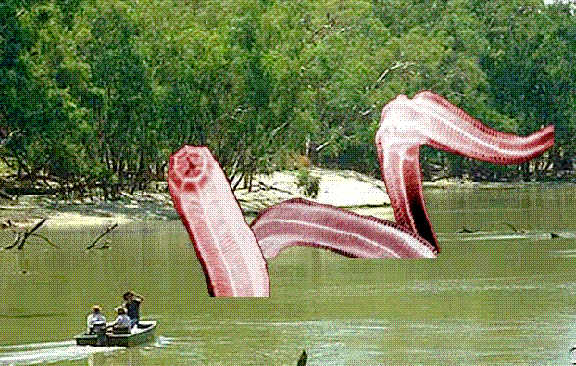| Nematoda | ||
| Nematioda | Nematoda |
| Nematoida | Ecdysozoa | Nematoida
└─► |
Nematoda | |
| Scalidophora | None |
Ecdysozoa | Nematoida | Panarthropoda |
|
Abreviated Dendrogram
|
Contents
Overview |
"If all the matter in the universe except the nematodes were swept away, our world would still be dimly recognizable, and if, as disembodied spirits, we could then investigate it, we should find its mountains, hills, vales, rivers, lakes and oceans represented by a thin film of nematodes. The location of towns would be decipherable, since for every massing of human beings there would be a corresponding massing of certain nematodes. Trees would still stand in ghostly rows representing our streets and highways. The location of the various plants and animals would still be decipherable, and, had we sufficient knowledge, in many cases even their species could be determined by an examination of their erstwhile nematode parasites."
--N.A.Cobb

It is a strange psychological quirk that humans love (or at least are impressed by) big things. We get excited by fifty inch flat panel TV screens and mile-long imperial battlecruisers. The bigger a prehistoric monster is, the more it fascinates. Every paleo geek loves Tyrannosaurus rex, but no-one cares about Parasite rex, despite the latter being without doubt the more deadly of the two (and far more impervious to anything human ingenuity could throw at it; resurrected dinosaurs wouldn't last five seconds against modern firearms). You would never see a thirty meter long nematode rising from the river like a mutaed alligator from the sewers, and it is precisely becaus eof their minute size, lack of complexity, and primitely parasitic habits that nematodes are the most abundant form of multicelluar life on Earth
Picture credits: Nematoda - photo © 2001, CSIRO Australia
| Ecdysozoa | Nematoda |
page MAK120418. All original text content by M. Alan Kazlev Creative Commons Attribution . Other content copyright respective authors or publishers